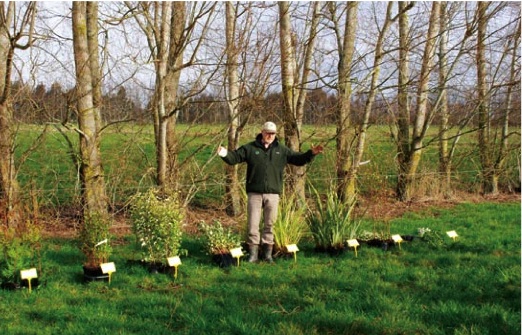Remember the four Ps: Planning for successful shelter systems
Ron Hinton, New Zealand Tree Grower November 2008.
The establishment of effective shelter systems, for dairy farms as well as any other farm, is a complex process deserving considerable planning and research before ringing the fencer or visiting the nursery. Crucial to success are the four Ps ? planning, preparation, planting and protection.
Planning
Essential factors to consider are things like the prevailing wind. Shelterbelts should be at right angles to your most harmful wind. Poor decisions made in orientating your shelter can make your situation worse by actually increasing the wind speed.
The first shelter usually planted on the farm is the belt around the house. While this is a good idea the most important belt is the one preventing the wind from entering your property. This is your most exposed boundary.
The right ratio
It is possible to over-plant your property although it is usually the opposite that occurs. In the design phase it is important that the mature height of your shelter is considered and matched to your paddock size so that over-planting does not occur. The golden rule with shelter versus wind reduction is often expressed in a ratio – or every metre of height, your shelterbelt will achieve 10 metres of wind redirection downwind. This ratio should be used when deciding both the location of your shelterbelt across your property and your species selection.
The right species
Species selection is often the most difficult decision because there are so many varieties listed in nursery catalogues. Careful consideration and research is required as your geographical and climatic situation will often dictate what can be planted. It will also eliminate many species from your choices.
Examples of key factors include severe exposure to frost, extreme wind condition such as Canterbury plains nor’westers and coastal Southland sou’westers, soil water loading as in very wet low lying areas, or drought stress in summer conditions.
Geographically, altitude and coastal proximity also play a major part in species selection. My advice is to do as much research as you can before making the decision. Talk to your neighbours about what does well in your locality. Attend field days and glean information from the experienced operators. The NZFFA in your area will have many members who will be able to show you effective species combinations for your area.
How wide?
The width of your belt should match the mature width of the varieties you are planting unless you elect to side trim or prune. Double row mixed species is usually the best option which requires a five to six metre wide belt. If space becomes an issue, a narrow single row belt is better than nothing and is often the preferred choice on dairy farms.
When you have solved all the above issues you should begin your next phase.
Preparation

This is a much simpler phase of the operation but no less critical.
Factors to consider in preparation are –
- Fencing, permanent not electric
- Animal control, primarily for hares, rabbits and possums. This should be done in advance of planting
- Deep cultivation or ripping before fencing.
Ordering tree seedlings can never be done too soon. It is not wise to leave it to the last minute as stock becomes depleted in mid to late winter and you may not get the grade or varieties you want. Visit the nursery and inspect the stock prior to ordering. Once you order most nurseries will place the best grade aside for you.
Planting
This phase begins with collecting your plants from the nursery. Ensure that you provide them with adequate protection during their trip back to the farm. A horse float is ideal.
The tree planting task is often given to the most junior staff member on the farm or the kids home for the school holidays. This can work, but take time to show them the correct technique. Poor planting is one of the main causes of plant deaths.
Protection
Once planting is behind you, the work continues with the protection of your asset. Weed control is essential and complex. There is a wide range of chemicals on the market and it is essential that you talk to experienced operators or your nurseryman about the best products to match the plant varieties you are planting. Poor weed control is the most common reason for shelterbelt failures. A minimum of two years of weed control is essential. In addition animal control must be continued throughout the first summer.
Overlooking any of the four P's will almost certainly leave you with a poor result. It is most important to do your research first. Your property will be enhanced both aesthetically and economically for generations.

 Farm Forestry New Zealand
Farm Forestry New Zealand